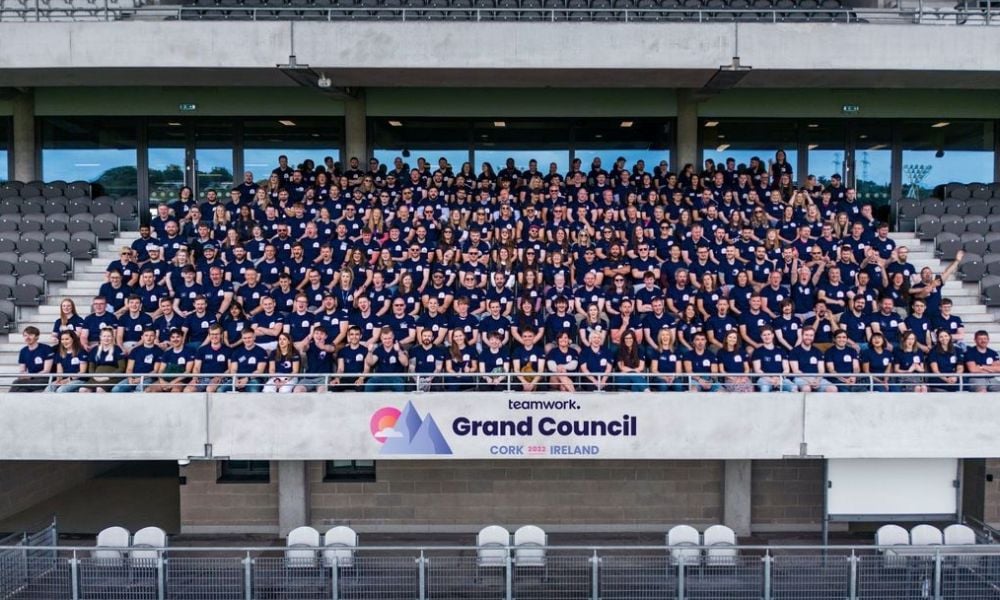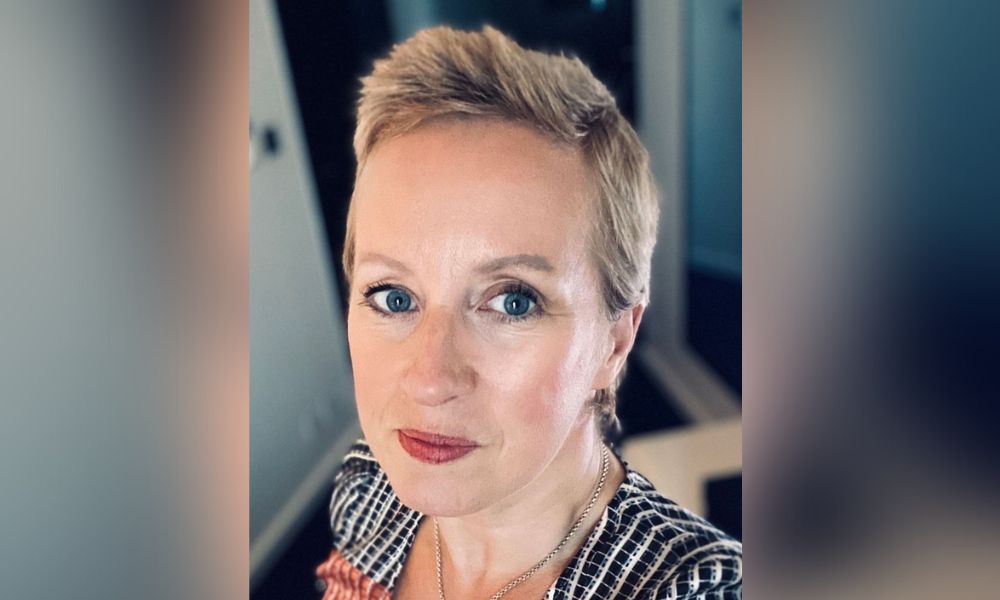'Everybody is looking at everybody's name tags because it’s different in 3D'

After three years apart, a Cork, Ireland-based company decided employees needed to get back together at an off-site meeting that used to be an annual event.
For the first time since 2019, Teamwork has invited more than 300 employees from around the world to gather in Cork for a week-long strategy and retreat session, as well as management training and fun events.
The event will include sessions on networking, team strategy alignment, team sports, and coffee with the founders to help employees connect not only with co-workers, but also, the company’s roots and mission.
“[There’s] huge energy, lots of excitement; something like 40 per cent of our current headcount has been hired mostly over the last two years so this is a huge novelty factor and everybody is looking at everybody’s name tags because it’s different in 3D,” says Jeni Brown, chief people officer at the project management software maker.
The company bills itself as “remote-friendly” instead of “remote-first.”
“We’ve seen, over the last two years, a shift to more of a localized affinity. People are located very close to their immediate team because that’s who they’ve been talking to consistently for the last two years, or they’ve worked with for the last two years. The idea of a broad organization is nebulous in a world where you’re literally working off your kitchen table or your ironing board or wherever,” she says.
“So moments like this week’s events become really important to building that out and creating a shift from the nebulous to the tangible sense of ‘We are Teamwork’ as a collective.”
The Conference Board of Canada made the switch to remote-first with great success.
Boosted communications
Teamwork, which traditionally was “white and a bit male,” says Brown, has made great strides recently in changing that makeup and becoming much more diverse, which has yielded good success.
To help achieve its goals, the company has placed a big focus on bettering its communications, she says, including hiring a new head of internal communications and culture “with a view to helping us mine the value of remote but also appreciate the challenges that brings and the importance of communication; to build more meaningful connection to drive collaboration, and to deliver performance for the business,” and ensconcing that role within HR.
“We’ve brought up things like a weekly connect call, where we have asynchronous updates; people can see what’s going on; we use our own internal chat channel and there’s multiple channels that people can connect through that,” she says.

Jeni Brown
“Fundamentally, we are a people business and we need people to be able to collaborate and in order to do that, they have to be able to communicate, and the best way to do that is actually to build those connections both through how we do our remote work, how we use our tooling, how we create those intentional moments, be it one-to-ones, building out our manager capability to work much more effectively in a remote, geo-dispersed session, cross-cultural, and these things are super important.”
As part of the effort to improve internal communications, the company audited past efforts with internal channels.
Some of the messaging was “very, very noisy,” and should be streamlined, says Brown. “[The message] is getting a little bit lost, so we will be looking at that.”
Considerations for remote work
The company has also invested in new applicant tracking systems, a new HRIS product and a new performance and engagement platform, all in an effort to help manage the remote-friendly operation, says Brown.
“It’s about making sure that we have that ability for asynchronous engagement, connection, that level of transparency — everything being in one place is super important and it helps us to be much more data-driven because when you’re not seeing people every day, suddenly data actually is really critical. You need to trust this, it needs to be very much in real time, it needs to be easily accessible, and it needs to inform the business in terms of how it makes a decision.”
Teamwork has adopted a “hub and spoke” model, which also helps in its goal of building connection in the workforce, she says.
“You can cluster together, people are not so spread out. There’s power in having people together but doing it in a way that makes sense… it’s not really about doing work but about work done and that reflects that emphasis, that new philosophy.”
Some companies are considering geographic pay policies but do they make sense?
Tips for HR
Measurement is a key way to ensuring those strong connections remain.
“Engagement is key: we measure our ENPS [employer net promoter score] at an organizational level, it’s a business metric for us and it’s something that’s owned by everybody. We give readouts to our department heads around what their current breakdown looks like, where there may be challenges, where things are going well and to create cue points for conversations and for town halls and for one-to-ones and for team meetings,” says Brown.
The role for the HR team is to become “a consultant into the business, to provide the insights around these areas,” she says, because there’s a really strong link between engagement and performance, “and, fundamentally, that’s why we’re all here.”
“We are not serving the business, we are the business, but we are a function in the business that provides consulting around people solutions; everybody has somebody that they’re working with or working for them. People are a consistent piece across any organization and if we don’t think about it in that way to see the importance of the role, and the criticality of doing this, then we will never actually get that seat at the table,” says Brown.




